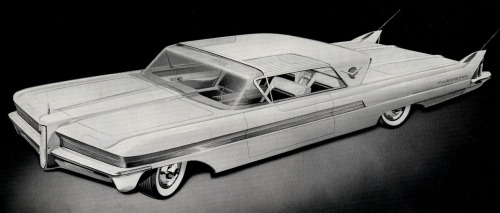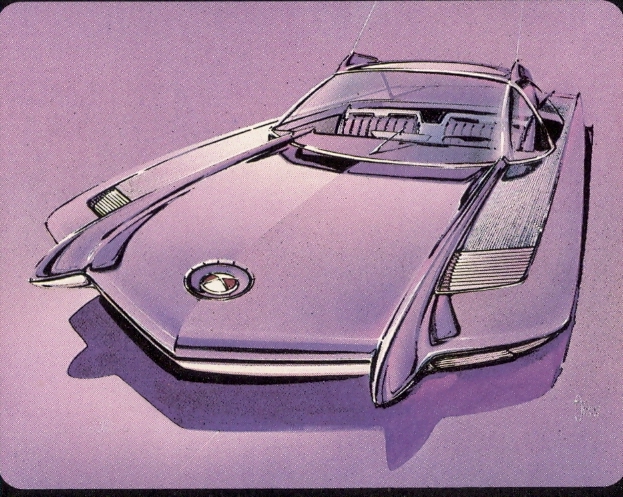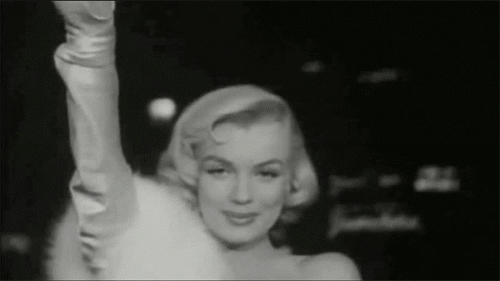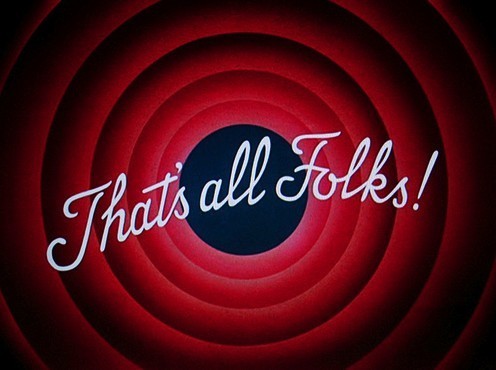Internet Debris

A collection by Neal McKenna
McKenna Ink Thesis Editing Service
To add your comments,
click here.
NOTHING posted here is mine!
Internet Debris does not claim rights
to any of the photos or media content posted to the site.
No copyright infringement is intended.
Back to the Automotive Retro Future
Internet Debris

A collection by Neal McKenna
McKenna Ink Thesis Editing Service
To add your comments,
click here.
NOTHING posted here is mine!
Internet Debris does not claim rights
to any of the photos or media content posted to the site.
No copyright infringement is intended.
Back to the Automotive Retro Future

Airex Radial 1940
First around the pylon is this black beauty by Richard Arbib, penned during his brief career at GM. Up front sits a radial engine straight out of an aircraft. Alas, there's no traffic-clearing propeller; instead, the chrome front bumpers provide a visual facsimile.
Dual Pontoon Buick 1940
The similarities to Lockheed's P-38 Lightning fighter are readily apparent in both this automobile and the futuristic airplane flying above it. The number "9" on the car's pontoons suggests the possibility of a nine-cylinder engine.
Image via Motor Trend

Le Prix 1946
Inspired by a George Lawson design for the Tucker, this curvaceous rendering was intended to predict the course of future Chrysler automobile designs.
Via Motor Trend

Futuristic Coupe circa1945
Arthur Ross designed this Buick-like car with awesome curves for General Motors Corporation. It was a futuristic sports-coupe proposal for the end of World War II.
Via Motor Trend

Dual Cockpit Buick, 1956
Wearing helmets possibly as protection against errant missiles, two riders enjoy this Buick's double-cockpit layout, a design feature popular during the 1950s. Other interesting styling tidbits include a winged oval grille, hood-mounted air intakes, and quad headlights - which became an industry standard after 1957.
Image via Motor Trend

Rear Wing Proposal 1957
Milt Antonick penned his version of the ubiquitous 1950s fin while still a student in school. And he had the last laugh. Equally outrageous wings would later appear on the 1969 Dodge Charger Daytona and 1970 Plymouth Roadrunner Superbird.
Image via Motor Trend

DeSoto proposal for the 1959 model year
Sleek mid-century architecture serves as backdrop for this DeSoto proposal. Although created in 1955 for the 1959 model year, the design bears a striking resemblance to the 1961 Chrysler. Image via Motor Trend
DeSoto proposal for the 1962 model year
Too little to late. Designs for the 1962 DeSoto were a giant step away from the towering tail fins dominating the style of all Chrysler Corporations marques since 1956. Of course, the plug was pulled on the DeSoto in early 1960 and a warmed-over Chrysler with an odd double grille was turned out in 1961. This 1962 design never had the chance to see the light of day.
Image via Motor Trend

Ford Gyron Proposal 1960
The design for Ford Motor Company's gyroscopically stabilized "Gyron" was likely nearing completion when Mead created this painting. Ford built one nonfunctional prototype for the auto-show circuit; the Gyron made its public debut at the New York International Auto Show in 1961. Unfortunately, the car was lost in a 1962 fire that also claimed Ford's art deco Rotunda exhibition building.
Via Motor Trend
Jet Powered Ski Car 1961
Looking like something cooked up for 007 by Q Branch, Bob Hubbach's ski car tanks up on its way to a futuristic mountain destination. No traction concerns when you've got jet power behind you. Image via Motor Trend

Turbine Vehicle, 1962
By Elia "Russ" Russinoff for General Motors Corporation, the artist says he created this wild turbine car proposal simply to spice up the walls of the design studio. It would've been a great way to scare off tailgaters!
Image via Motor Trend
Futuristic, Futurama and Retro-futurism
The Future! - Are we there yet?
No.. but we are closer than we have ever been.
Even more than architecture, fashion and aircraft, cars are the most visually represented statement of our possible future. From Rust Heinz’ 1938 Phantom Corsair to Syd Mead's Spinner in Blade Runner, the car has been central to our dreams and the imaginations for our potential.
The 1950's saw the emergence of a style of design exemplified by Nuccio Bertone, Virgil Exner and Harley Earl, that while it may be considered visually naive now still has profound influence on our perception of future possibilities. GMs Motorama of 1956 was the major showcase for this style of design that lasted into the early seventies, the over-riding feature being the human interpretation of function as driven by form.. The last truly great examples of this period; the Coke bottle Corvette of 67-73, the Ferrari Dino, Lamborghini Muira and E-Type Jag are now revered as works of art by car cognoscenti and their prices reflect their stature in the motoring world.. All of these cars display a human’s perception of the flow of air over metal; the mind as a virtual wind tunnel. Post these cars we saw a period of design that was quite - well...., square.
The second coming of car design emerged around ten years ago and has been going from strength to strength. While the Futuristic period of the 50's set the visual benchmarks and boundaries for current designers, the designers of the period did not have the shackles of the oil, financial or environmental crisis to deal with. They also did not have the technology available that allowed them to add the function to the form efficiently. At the very heart of the current design period is the evolution of human possibilities that advancing technology and social dreams and responsibilities allow and dictate.. What we are seeing is art meeting and merging with technology to create form with function. If the 50’s were the golden era of car design we have now reached platinum. The Veyron, the 599, the DBS, 997, Murcielago and yes, still the Corvette – all are incredibly beautiful and also capable of 200 mph in relative safety.
As exciting as car design presently is the Futurama period is hard to let go of, hence the number of Retro-future cars we continue to see. From the Mini to the Mustang good design should be celebrated, honored and mimicked. The re-interpretation of a classic design when made relevant to the current situation is not something to scorn as it just adds another variety, another choice - and there is nothing wrong with that.
For a lot of current designers the benchmark for futuristic design was set in the 70's by Syd Mead ...Visually we are there. Technologically we are close.
We are at the dawn of the alternate propulsion era. We have broken through the political and financial barriers of the oil era. In many ways we can thank the current financial crisis for that. Electric is on the way, which will be an enthusiasts dream with its full size slot car performance and environmental friendliness.
Let’s just not get to the point we ban petrol cars from our roads, let them naturally evolve out.
With the future - we are almost there, but our past is continuing to remain with us longer. - Thankfully.
The last turn of a V12 on a public road should be put off for as long as possible.
No.. but we are closer than we have ever been.
Even more than architecture, fashion and aircraft, cars are the most visually represented statement of our possible future. From Rust Heinz’ 1938 Phantom Corsair to Syd Mead's Spinner in Blade Runner, the car has been central to our dreams and the imaginations for our potential.
The 1950's saw the emergence of a style of design exemplified by Nuccio Bertone, Virgil Exner and Harley Earl, that while it may be considered visually naive now still has profound influence on our perception of future possibilities. GMs Motorama of 1956 was the major showcase for this style of design that lasted into the early seventies, the over-riding feature being the human interpretation of function as driven by form.. The last truly great examples of this period; the Coke bottle Corvette of 67-73, the Ferrari Dino, Lamborghini Muira and E-Type Jag are now revered as works of art by car cognoscenti and their prices reflect their stature in the motoring world.. All of these cars display a human’s perception of the flow of air over metal; the mind as a virtual wind tunnel. Post these cars we saw a period of design that was quite - well...., square.
The second coming of car design emerged around ten years ago and has been going from strength to strength. While the Futuristic period of the 50's set the visual benchmarks and boundaries for current designers, the designers of the period did not have the shackles of the oil, financial or environmental crisis to deal with. They also did not have the technology available that allowed them to add the function to the form efficiently. At the very heart of the current design period is the evolution of human possibilities that advancing technology and social dreams and responsibilities allow and dictate.. What we are seeing is art meeting and merging with technology to create form with function. If the 50’s were the golden era of car design we have now reached platinum. The Veyron, the 599, the DBS, 997, Murcielago and yes, still the Corvette – all are incredibly beautiful and also capable of 200 mph in relative safety.
As exciting as car design presently is the Futurama period is hard to let go of, hence the number of Retro-future cars we continue to see. From the Mini to the Mustang good design should be celebrated, honored and mimicked. The re-interpretation of a classic design when made relevant to the current situation is not something to scorn as it just adds another variety, another choice - and there is nothing wrong with that.
For a lot of current designers the benchmark for futuristic design was set in the 70's by Syd Mead ...Visually we are there. Technologically we are close.
We are at the dawn of the alternate propulsion era. We have broken through the political and financial barriers of the oil era. In many ways we can thank the current financial crisis for that. Electric is on the way, which will be an enthusiasts dream with its full size slot car performance and environmental friendliness.
Let’s just not get to the point we ban petrol cars from our roads, let them naturally evolve out.
With the future - we are almost there, but our past is continuing to remain with us longer. - Thankfully.
The last turn of a V12 on a public road should be put off for as long as possible.
Rod Halligan Via Cars Guide
Drawings from the Great Age Future Retro: of Automobiles
Huntsville, AL – Future Retro: Drawings from the Great Age of American Automobiles showcases the beauty and ingenuity of American automotive design during the decades following World War II, a landmark period in car styling. Drawn entirely from the collection of Jean S. and Frederic A. Sharf, these illustrations depict a particularly resonant segment of the American dream.Future Retro provides a rare glimpse into the creative process behind the scenes at some of Detroit’s premiere car companies through an eclectic mix of illustrations, ranging from preliminary sketches to fully rendered works intended for presentation to company executives.


Some of the drawings featuredoffer concepts that would later be incorporated into specific models, while others represent futuristic ideas that never made it past the drawing board. Dating from an era when design and appearance were increasingly important factors in automotive sales, there are ample references to the shapes of airplanes and rockets, along with other emerging technologies that influenced postwar car design.
Jenny Lane, Communications Manager
Huntsville Museum of Art http://www.hsvmuseum.org/
Jenny Lane, Communications Manager
Huntsville Museum of Art http://www.hsvmuseum.org/
The 1950s Future

Via Flicker

Via Forward Look Discussion Forum

1957 Packard Predicta concept

Late 1950s Ford concept for the early 1960s
Yesterday's Tomorrow

Image Via Smashing Magazine
Concepts of the future for the way we live our lives have been expressed in forms of art, design, movies, comics, and even cartoons. For many decades before man even landed on the Moon, people have been fascinated with space and the endless possibilities it could bring. The future is not only about being in space, though it has a major influence, it lies within your innovative minds and skills as the designer and artist. So, whether you go back into the past or here in the present, the future is all we truly envision.

Image Via Smashing Magazine

Image Via Smashing Magazine
The illustrations in this series were drawn by hand using chalks, colored pencils, paints, and pens. With typography, you could find artists/ designers also using fountain pens or calligraphy pens with a large variety of nibs, along with bottles of colored ink. Even today, you will still find designers and architects who prefer to use tools such as the t-square, triangular scales, triangle, french curve, and of course, your basic compass. All these low-tech devices helped to create beautiful and fanciful art...
.
Image Via Smashing Magazine
To add your comments, click on
links to this post
here or below. It will take you to a stand-alone copy of this page. There, you will find the comments box, so feel free to let 'er rip.
If you like what you see here - tell me - and tell your friends!
What lies beneath...
Spooooky Reading...


It makes a good gift for yourself!
Buy it here✔

If you like what you see here - tell me - and tell your friends!
What lies beneath...
Spooooky Reading...


It makes a good gift for yourself!
Buy it here✔


It makes a good gift for yourself!
Buy it here✔








No comments:
Post a Comment